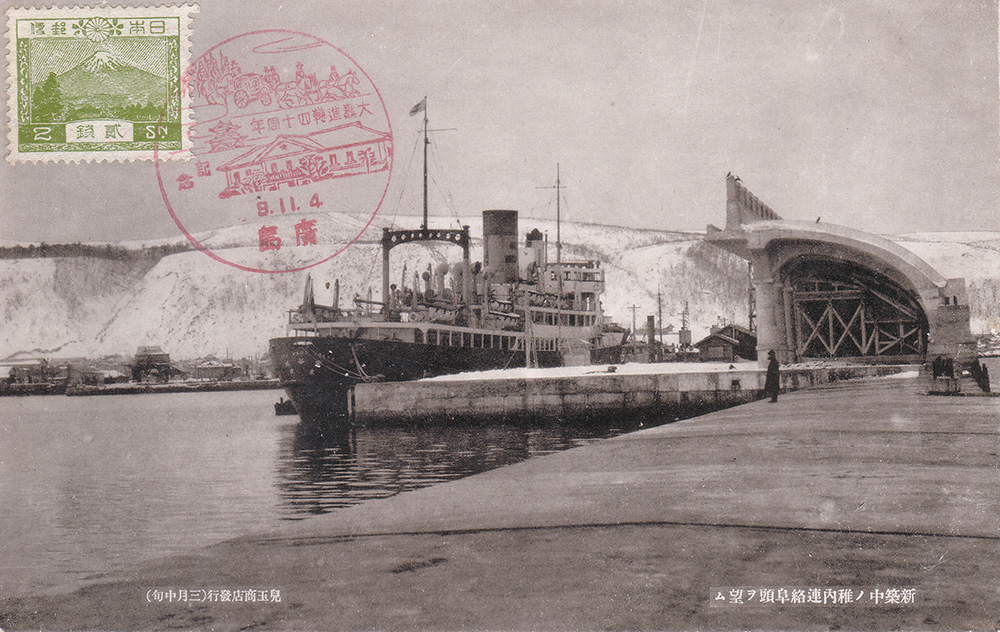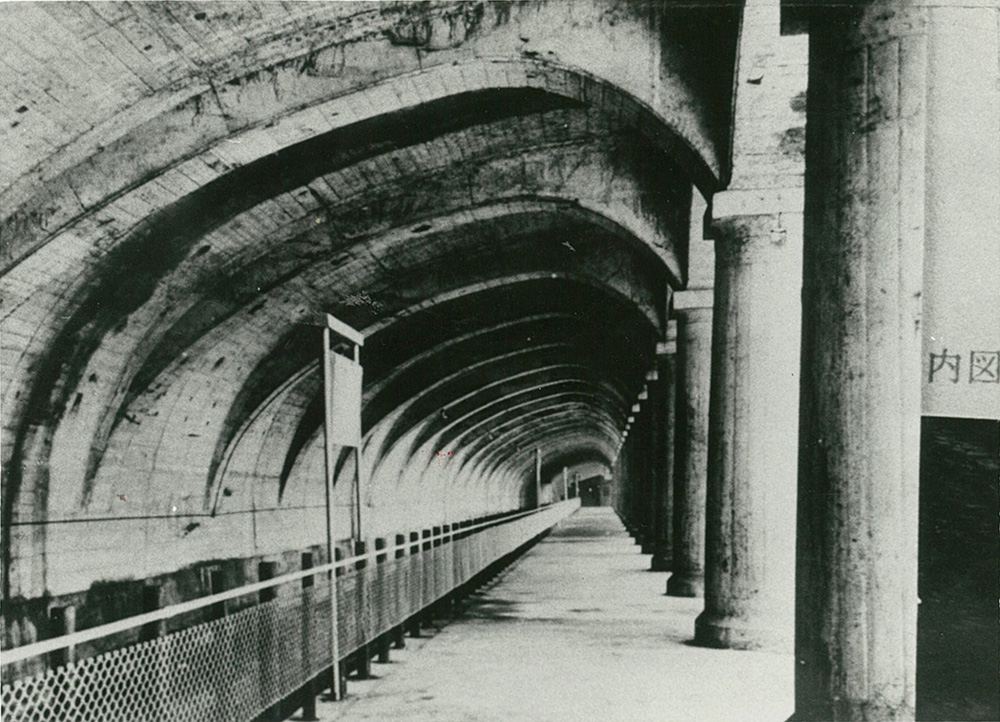Take a photo to upload onto social media at the Northern Breakwater Dome.


With its semi-arched roof and 70 pillars that support it,
the Northern Breakwater Dome is reminiscent of ancient Roman structures.
Completed in 1936, this breakwater is a designated Hokkaido Heritage, as a historical landmark.
But why was this dome-shaped breakwater constructed?
Karafuto (currently Sakhalin Oblast, Russian Republic), located north of Wakkanai, provides the answer.
Ferry services once operated between Wakkanai and Karafuto

At one time, a part of Karafuto was Japanese territory,
and ferry services that transported countless people and goods operated between Wakkanai Port and
the Karafuto towns of Otomari (currently Korsakov) and Honto (currently Nevelsk).
However, as Wakkanai Port experiences strong winds throughout the year,
and only a small breakwater existed, people were often swept into the sea by high waves.
Then, Minoru Tsuchiya was posted to the Wakkanai Port Construction Office.
Tsuchiya had graduated from Hokkaido University just three years before.
At one time, a part of Karafuto was Japanese territory, and ferry services that transported countless people and goods operated between Wakkanai Port and the Karafuto towns of Otomari (currently Korsakov) and Honto (currently Nevelsk). However, as Wakkanai Port experiences strong winds throughout the year, and only a small breakwater existed, people were often swept into the sea by high waves. Then, Minoru Tsuchiya was posted to the Wakkanai Port Construction Office. Tsuchiya had graduated from Hokkaido University just three years before.
The dome that protected passengers from strong winds

Tsuchiya, who was 26 at the time, utilized his knowledge of buildings and concrete architecture around the world,
which he had studied at university, to design the new breakwater in approximately 2 months.
Concrete architecture was not common in Japan at the time, but three years later the North Breakwater Dome was completed.
In 1938, Wakkanai Sanbashi Station was opened at the front of the building,
which was built in the form of a supple arch to naturally break the high waves caused by the strong winds.
The dome protected passengers, enabling them to transfer between the train and the ferry comfortably,
helping the ferry service to prosper even more.
Tsuchiya, who was 26 at the time, utilized his knowledge of buildings and concrete architecture around the world, which he had studied at university, to design the new breakwater in approximately 2 months.Concrete architecture was not common in Japan at the time, but three years later the North Breakwater Dome was completed. In 1938, Wakkanai Sanbashi Station was opened at the front of the building, which was built in the form of a supple arch to naturally break the high waves caused by the strong winds. The dome protected passengers, enabling them to transfer between the train and the ferry comfortably, helping the ferry service to prosper even more.
A symbol of Wakkanai steeped in history

When the war ended in 1945, services to Karafuto were abolished and Wakkanai Sanbashi Station closed.
The North Breakwater Dome’s role of protecting passengers also ended. Subsequently, the dome faced demolition due to aging,
but because it is a historical structure and a type that is seldom seen around the world, it was refurbished and preserved in its original form.
The North Breakwater Dome now acts as a venue for a variety of events,
as well as a location for movies and commercials.
The beautiful, picturesque form is popular among young people for its photogenicity.
Why not come and take your own snaps while thinking of its history?
When the war ended in 1945, services to Karafuto were abolished and Wakkanai Sanbashi Station closed. The North Breakwater Dome’s role of protecting passengers also ended. Subsequently, the dome faced demolition due to aging, but because it is a historical structure and a type that is seldom seen around the world, it was refurbished and preserved in its original form. The North Breakwater Dome now acts as a venue for a variety of events,
as well as a location for movies and commercials. The beautiful, picturesque form is popular among young people for its photogenicity.Why not come and take your own snaps while thinking of its history?
Click here for more details on the Northern Breakwater Dome
https://www.north-hokkaido.com/spot/detail_1075.html
- TOPICS
- Wakkanai Port Northern Breakwater Dome A symbol of the busy times when people travelled to and from Karafuto (Sakhalin), the breakwater dome was designated a Hokkaido Heritage in 2001.

- Wakkanai Port Northern Breakwater Dome
-
- Approx. 5-min. walk from JR Wakkanai Station